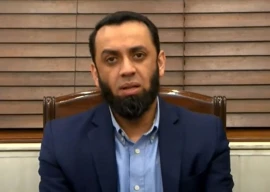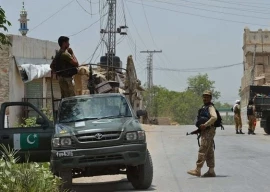
Pir Roshan of Kaniguram in South Waziristan, who lived in the 16th century, was against the religious customs practiced in the area. He was a strong supporter of equal rights for women. He also opposed dynastic rule and advocated that leaders should be chosen on the basis of their capabilities and not on kinship. He is credited with inventing the Pashtu script, alphabets and some grammar. However, he was an urmer (Burki), but he spoke Pashtu and all his followers were Pashtuns. Due to strong opposition from his own family, he left the area and preached in Mohmand, Charsadda and other Yousafzai and Mohmadzai areas. After Emperor Akbar came up with his concept of Din-e-Ilahi, Pir Roshan rebelled against the Mughals using Tirah (in present-day Khyber Agency) as his base. He was defeated in a battle in Nangrahar but survived. Ultimately, a Yousafzai lashkar near Tarbela killed him in 1581. His son, Jajala, assumed the leadership and fought many battles against the Mughals, killing Raja Birbal near Jamrud.
Then take the case of Rohilla, a Pashtun princely state. Syed Ahmed Shaheed was from Bareilly and may or may not have been a Rohilla Pashtun, but spoke Pashtu from his childhood. He was a trusted lieutenant of Shah Abdul Aziz, who got him trained in the army of another Pashtun, Amir Khan of Tonk. He travelled to Makkah and Madina and was influenced by the teachings of Adul Wahab. He declared India as darul harab and migrated to the Pashtun-dominated area of India via Afghanistan. Local Pashtun tribals joined him in large numbers for jihad against the Sikhs. He wanted to establish a darul Islam and spread the message of Wahabism to the Muslims of India. He fought a number of battles against Sikhs but was ultimately killed in Balakot in 1831. His followers refused to accept his death and propagated that he had hid himself and would reappear at an opportune occasion. They assembled in Satana and in 1858 the British had to launch an operation to uproot them.
In 1897, Sadullah Khan from Buner, known as the Sartor Faqir and referred to by the British as the ‘mad mullah’, organised tribes in a rebellion against the British garrison of Malakand. His followers from Bajaur, Dir, Swat and Buner were convinced that he had supernatural powers and could perform miracles. He promised the mujahideen that a hidden army was waiting behind a mountain. The moment the jihad would start, Allah would unleash this army, and all the infidels would be killed. The Ghazis would be rewarded in this world and the shaheeds would be rewarded in paradise. He was able to muster the support of more than one thousand tribals. On July 1897, the Faqir attacked Chakdara and Malakand. Due to lack of planning and non-appearance of the ‘hidden’ army, the jihadis dispersed, leaving a large number of dead, including some British. The Faqir survived and continued with his jihad in different areas until he died in 1917.
The Faqir of Ipi fought a jihad against the British for 12 years (1935-47) in Waziristan and Kamal Malikdin Khel fought against the forces of Richard Warburton in Khyber for a number of years. The recent movement of Sufi Muhammad, who captured six districts in Malakand in November 1994, forced the traffic to ply on the right, left being deemed un-Islamic. In 2001, he motivated more than 5,000 Pasthuns to fight Nato, though they fled without even firing a single round. There are other numerous examples wherein religious leaders have led the Pashtuns in jihad.
Published in The Express Tribune, April 26th, 2011.
1719315628-0/BeFunky-collage-(8)1719315628-0-405x300.webp)


1731329418-0/BeFunky-collage-(39)1731329418-0-165x106.webp)





1731771315-0/images-(3)1731771315-0-270x192.webp)







COMMENTS (54)
Comments are moderated and generally will be posted if they are on-topic and not abusive.
For more information, please see our Comments FAQ